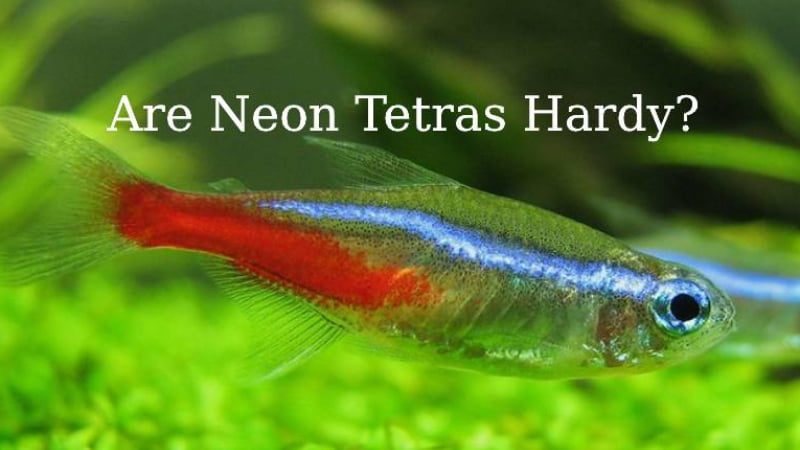Tetras are hardy fish that are very easy to adapt to, so there is a huge selection of these fish you can choose from. However, as a breed of tetra, the question here is whether neon tetras are hardy or not.
Even after extensive investigation and drawing conclusions, it may still be challenging to answer the questions “what,” “why,” and “how” with regard to hardy fish such as neon tetras.
Here, you may understand why they are regarded as hardy and what variables influence their health.
Are Neon Tetras Hardy?
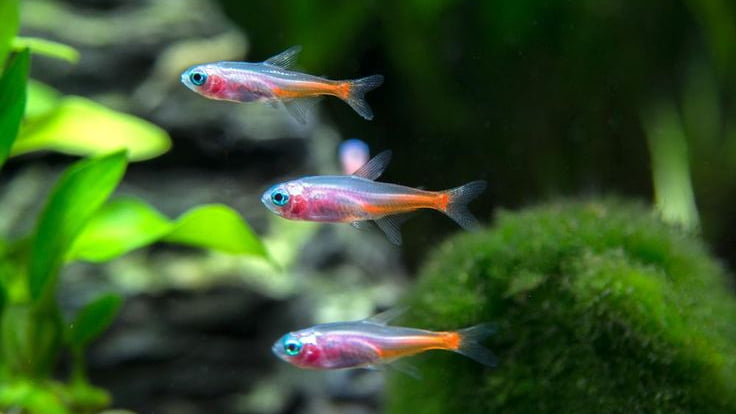
Neon Tetras are perfect for beginners for a variety of reasons. Adaptability and flexibility are two of them.
Therefore, the answer to the question “Are neon tetras hardy?” is rather straightforward: yes. These tetras eventually become hardy fish, but that did not happen immediately after they were born. In addition, neon tetras need some time to acclimate to the new water conditions before they can thrive in the new environment.
It may take neon tetras a few days or more to a set amount of time before they feel completely at home in their new surroundings. Once they have established themselves in their environment, these tetras are resilient species of fish.
On the other hand, neon tetras have a negative response to any changes in the water. Tetras are susceptible to stress and illnesses brought on by fluctuations in temperature as well as any change in the chemical composition of the water, all of which may ultimately result in their death.
Therefore, while the tetras are still moving about in the tank, you should refrain from making any adjustments to the water.
Things Make Neon Tetras Hardy
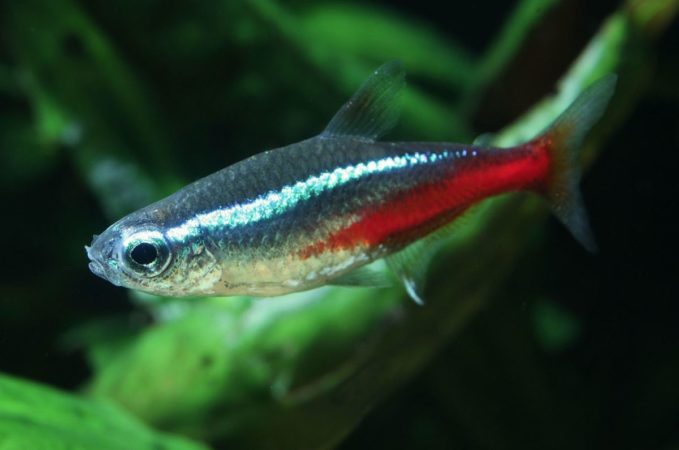
Neon tetras may thrive in a variety of different kinds of water. As long as their fundamental requirements are met, these fish can flourish. Hence, many aquarists throughout the world like them because of their durability and versatility.
The hardness of water preferred by neon tetras is less than 20 dGH. They are at risk for major health complications if they fall outside of this range. On top of that, they like the gentle water. But they can also cope with water that is just moderately harsh. All these things make them hardy fish.
Neon tetras, on the other hand, are docile fish. In a communal tank, they get along nicely with a large number of calm fish. Also, their stress levels are typically low since they are not aggressive. They become even more resilient due to this trait.
Even while neon tetras are tough and can adapt to a wide range of water conditions, their health may still be negatively impacted by a number of different causes. Let’s have a discussion about these things right now.
10 Factors Affecting The Hardiness Of Neon Tetras
Stress
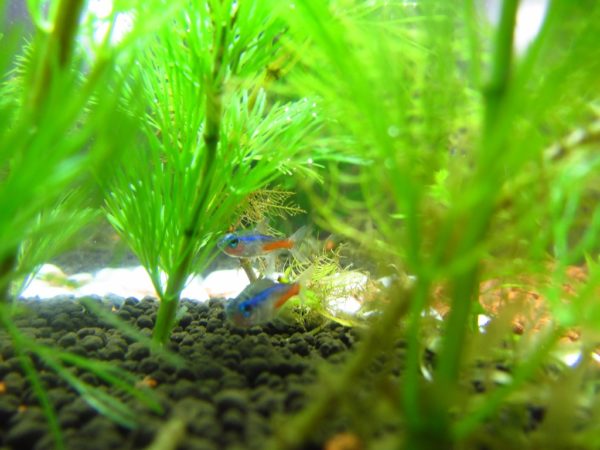
One of the key elements that may have a negative impact on the health of neon tetras is stress. Controlling their stress levels is essential for their well-being.
If stress is ignored, it may be lethal to neon tetras. Stress may occur from poor water conditions, inappropriate water parameters, bullying, cramped spaces, loneliness, and illness.
The following are examples of neon tetra behavior that varies when they are stressed:
- Hiding in the tank for too long,
- Loss of appetite, resulting in weight loss,
- Color fading,…
Poor genetics
A neon tetra’s health might be threatened by poor genetics as well. If you have a fish with poor genetics, you can’t do much.
Your best option is to avoid buying neon tetras that have bad genes. Neon tetras must be purchased from reputable pet retailers or breeders that take excellent care of their fish.
Poor water conditions
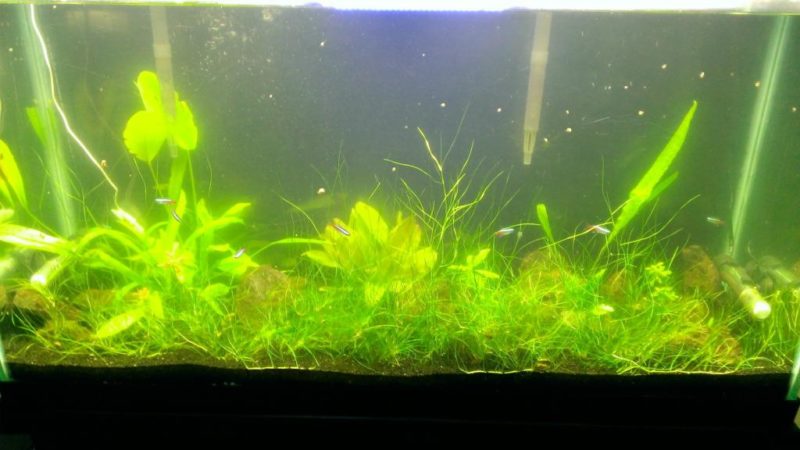
It is essential that fish have access to clean water in order to thrive. Neon tetras are unable to live in polluted tanks for lengthy periods of time.
Increased levels of ammonia, nitrates, and nitrites are caused by unclean water and may have severe effects on aquatic life and ecosystems.
Pollution might occur owing to a lack of water changes, residual fish food, fish excrement, or improper filtering.
Unsuitable water parameters
Even though neon tetras are resilient, they may get ill if their water is too acidic or alkaline. The neon tetras might also be stressed by a continual variation in the water conditions. Stress might cause them to become ill more often.
The optimal water conditions for neon tetras include:
- Water temperature: 70°F to 80°F (21°C to 27°C),
- pH levels: between 6 to 7,
- Nitrate: <20 ppm,
- Ammonia and nitrite: 0 ppm.
Suddenly changing water levels and temperatures
After acclimating themselves to the water in the tank, neon tetras develop a sense of security. Changing a large amount of water in a short period of time might have a negative impact on the water’s chemistry. It’s possible that the neon tetras may go into shock as a consequence, which will be detrimental to their health.
Partially changing water is necessary. However, you should try to avoid frequently changing the water since this might be harmful to the neon tetras.
In addition, neon tetras are susceptible to injury if the temperature of the water suddenly drops or rises dramatically. As a result of this, they can have a greater susceptibility to sickness.
Overfeeding
Another major factor affecting the health of neon tetras is overfeeding. Because neon tetras are small fish, they only need to be fed once or twice a day.
In many cases, excessive fish waste is the consequence of overfeeding. If the uneaten food is not removed quickly, the tank water may get polluted. The water may become poisonous, which will cause neon tetras to experience a decline in their health.
Overcrowding
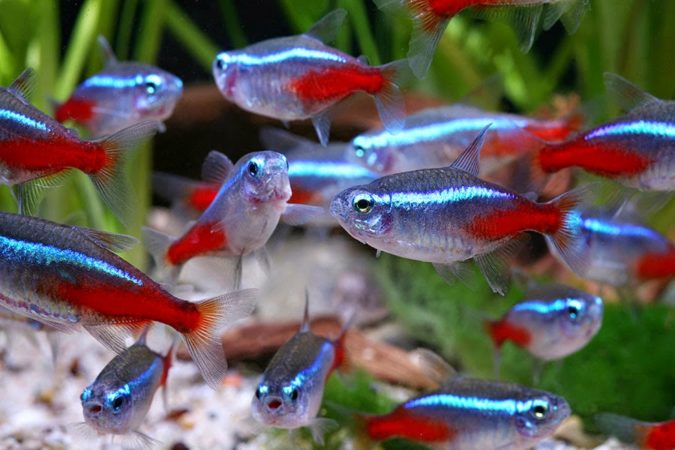
The neon tetra is an active kind of fish. They like being able to freely swim around in the aquarium. So, overcrowding in the tank will lead to space limitations.
If they don’t have enough room, neon tetras might get agitated and frightened. Not a smart idea at all; they may end up hiding out.
In addition, the oxygen content of the tank water decreases when it is overcrowded. The more fish there are, the greater the need for oxygen will be.
Loneliness
In their native environment, neon tetras are seen in big groups. They flourish when they are with each other.
Therefore, if you just have a few neon tetras in a tank, they may feel alone and may display negative behaviors as a result. Even worse, it might put them under a great deal of pressure. They may become more susceptible to illnesses as a result of their increased stress.
In addition to this, the immune system can become weakened as a direct effect of stress. Neon tetras’ health will be harmed by each of these circumstances. They’re vulnerable to almost any sickness.
Incompatible tankmates
As a non-aggressive fish, neon tetras are more comfortable in the presence of fish or other calm living creatures.
However, other factors that contribute to the poor health of neon tetras include their tankmates’ aggression or incompatibility.
An aggressive tankmate will continually bully the neon tetras in your home aquarium. Because neon tetras are not used to being bullied, when threatened, they will hide in order to protect themselves.
In addition, the small neon tetras might be eaten by aggressive fish. Constant taunting and the threat of an attack by a predatory fish may lead to anxiety and depression. As a result, they’ll be at risk of serious health problems.
Neon tetras should not have tankmates like Betta fish, Angelfish, or Cichlids; these fish are not suitable for neon tetras and should be avoided.
High water currents
Slow-moving water streams are neon tetras’ native environment. Hence, they do not like strong currents. If the water movement is really strong in the tank, the neon tetras may be pushed all over the place.
Neo tetras will go into hiding to escape this, and they’ll be stressed out most of the time. In addition, they won’t be able to feed effectively in strong currents. This will result in a weakened state.
Video: 5 Reasons Why Neon Tetras Die
FAQs
What is the easiest tetra to keep?
The simplest tetra fish to care for are the smaller varieties, such as neon, ember, ruby, and glowlight, which have a minimal influence on the aquarium they are maintained in.
How hardy are green neon tetras?
There are no commercially available green neon tetras. So, it’s no surprise that they’re not accustomed to living in tanks at home. So when the tank is new, green neon tetras are more vulnerable to environmental changes. In order to successfully introduce green neon tetras, the tank environment must be perfect and steady. They like the conditions of the dark water the most. However, they flourish in a wide variety of water conditions.
Is the black neon tetra hardy?
In comparison to other sensitive fish, black neon tetras are tough because they can tolerate a wider variety of water conditions. They can swiftly adjust to a wide variety of aquarium settings. Several black neon tetras like clear water. They may, however, grow in water that has a faint tan to it. Despite their hardiness, these fish are susceptible to the same diseases as any other tropical fish. The good news is that most of these conditions may be treated with simple measures. Black neon tetras are also well-suited to over-the-counter drugs because of their toughness.
In cold water, are neon tetras able to survive?
No, Neon tetras can’t survive in cold water. The coldest water they can withstand is around 21°C (70°F).
As their metabolism slows down, they may not be able to digest the food you give them, putting them at risk of going into shock and dying.
They will also grow more anxious and more susceptible to illness and death as a result of this.
What is the easiest tetra to keep?
The simplest tetra fish to care for are the smaller varieties, such as neon, ember, ruby, and glowlight, which have a minimal influence on the aquarium they are maintained in.
Other breeds that you may wish to take into consideration are as: Panda Tetra, Flag, Serpae Tetra, Green Neon Tetra, Black Neon Tetra, Flame Tetra, GloFish Tetra,…

Annette M. Chaney is an experienced marine biologist with over 20 years of experience as an aquarist and fishkeeper. She started her first aquarium at a young age, filling it with frogs and goldfish obtained from the ten-cent pet store.
Annette grew up caring for and breeding African Cichlids, which led to a hobby in high school that doubled as a profitable means. Attending Reed College gave her time to solidify herself as an accomplished aquarium caretaker with an eye for sales. After that, from 2009 – 2013, she studied at Roger Williams University – one of the most prestigious universities for Aquaculture and Aquarium in USA. She is the founder of AquariumCircle since 2010.
